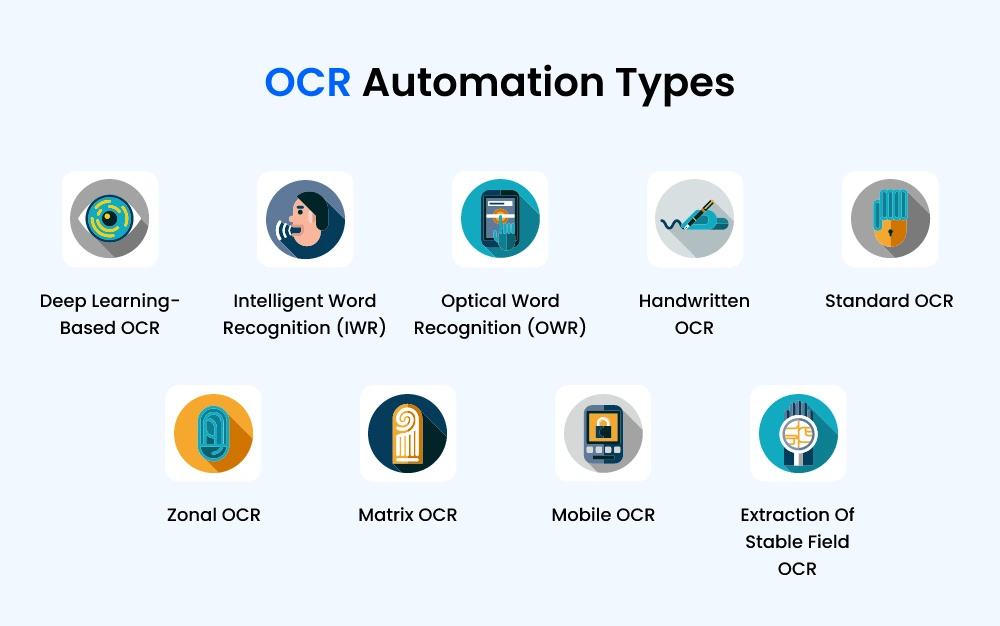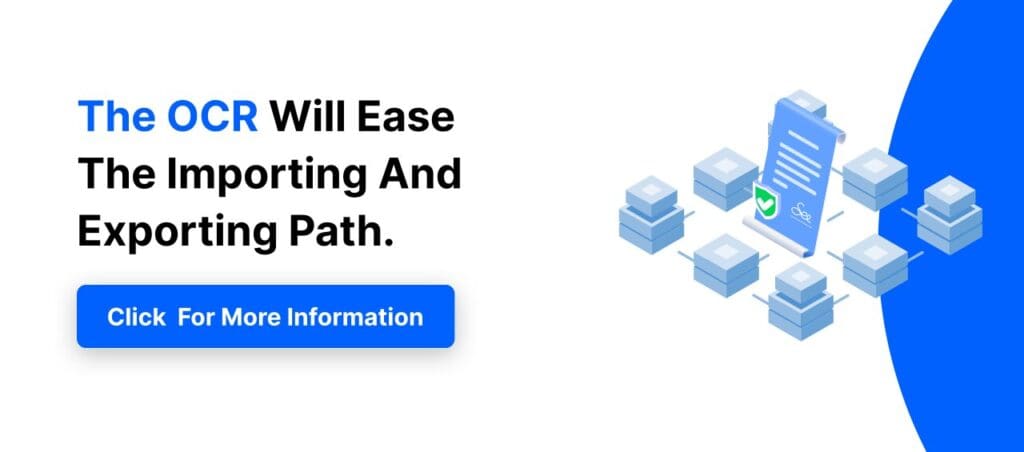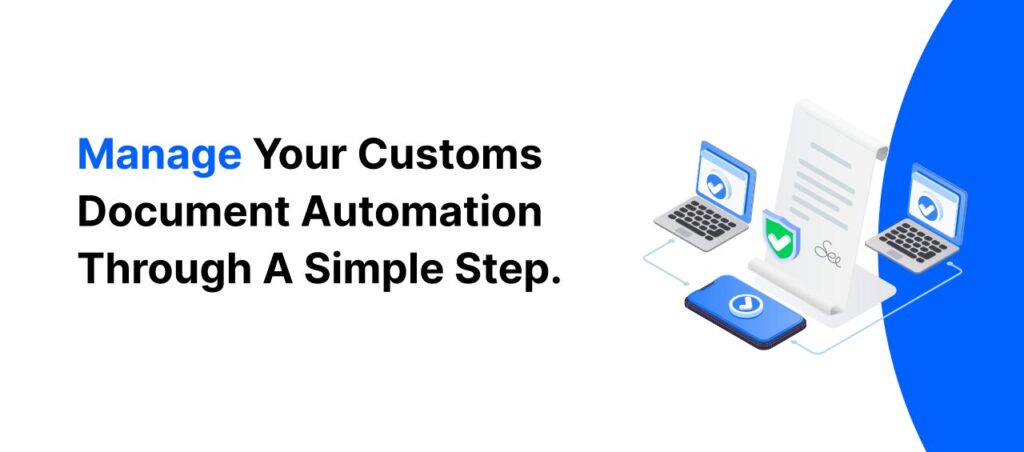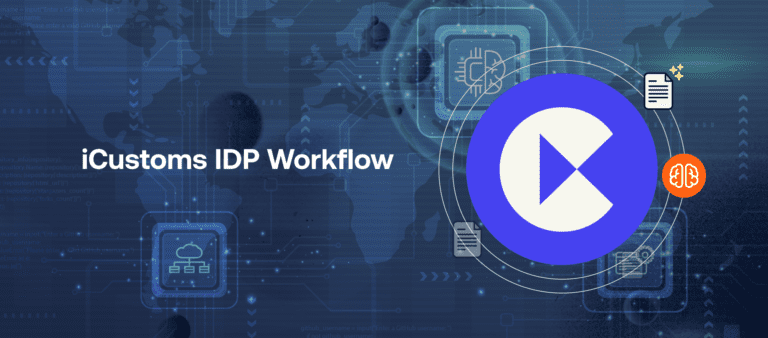Fast & Accurate ENS GB & EU ICS2 Solutions Built for You.
OCR Automation in Customs: The Power of AI-based OCR
-
Freya Jane
- Director of Customer's Success
Have you thought about advancing using smart technology? If so, it’s crucial to investigate how technology is extending into novel fields. People and companies always look for new ways to increase efficiency and simplify processes in order to keep up with the rapid advancements in technology. OCR automation (Optical character recognition) is one example of this advanced technique in practice today.
OCR automation software has fundamentally altered how businesses manage their data by converting scanned photos and even handwritten text into formats that are readable and editable by computers. Within the context of this blog, we investigate the possibilities of OCR automation and how it may be used to drive efficiency across various industries, especially in customs.
What research says about OCR automation:
“Research indicates that OCR automation, which mechanically extracts data from documents, can reduce processing times in customs by as much as 70%.”
This results in turnaround times decreasing from days to just minutes, translating to huge efficiency gains. Additionally, there is a significant improvement in data capture accuracy, which reduces errors and discrepancies. In the end, these developments result in cost savings of over 70% as compared to manual processing. These results show how OCR automation has a wide range of applications that can optimise processes and yield substantial benefits for many departments in your company.
Within the context of this blog, we investigate the possibilities of OCR automation and how it may be used to drive efficiency across various industries, especially in customs.
What is OCR automation?
The optical character recognition system is software that is built to convert the hard forms of documents and photographs into digital systems. But when we align it, like automating OCR, it is state-of-the-art software that quickly transforms scanned documents or photos into text that can be edited on a computer.
Automated OCR software can recognise and interpret characters in photographs, such as those obtained from handwritten text or low-resolution scans, as a result of enhanced algorithms and machine learning capabilities. Reducing manual data entry with OCR automation boosts industry efficiency, accuracy, and productivity.
It’s useful in many different fields, including document management, accounting, healthcare, retail, law, and more, because it helps businesses streamline processes, save money, and make their data more easily accessible. Businesses can digitise paper documents with OCR automation to fully benefit from digital data and the advantages of an increasingly automated and networked future.
What problems do we face without OCR in import and export?
Although OCR is used in almost every working field in the form of automated OCR software. Our main focus is in the customs field, so let’s turn ourselves into the customs world. However, OCR had a wall that blocked a further successful path. It faced several difficulties, such as:
- There was still a lot of manual documentation work while importing and exporting, which interpreted multiple errors.
- The processing time was very slow because adding the documents to the scanning process took longer.
- The customs freight process faces multiple rejections from HMRC due to errors.
- Digital platforms and technologies automate and integrate modern import and export procedures. Manual data entry may cause inefficiency and inaccuracies in these systems.
- Manual data entry allows data tampering and fraud. OCR improves data integrity and reduces fraud.
- Manual data entry becomes unsustainable as import and export quantities rise. OCR can scale without compromising accuracy.
Different OCR automation types used in customs
Power automated OCR classifies its use cases into subcategories, such as the following:
Deep learning-based OCR
Thanks to recent developments in deep learning and AI, OCR models that can be trained on massive datasets have achieved a new level of accuracy. OCR systems powered by deep learning are flexible enough to accommodate numerous scripts, languages, and writing styles.
Intelligent word recognition (IWR)
IWR is an enhanced optical character recognition method. For more precise results when processing complex or cursive handwriting, it can comprehend the meaning of sentences and the connections between characters.
Optical word recognition (OWR)
OWR is optimised for word recognition rather than character recognition. It’s especially helpful in cases where the text’s format, typeface, or layout might change.
Handwritten OCR
Handwriting OCR stands for “optical character recognition” and is used to refer to the process of digitising handwritten text. It is useful for digitising documents and notes written by hand since it employs complex algorithms to evaluate and understand different types of handwriting.
Standard OCR
This form of optical character recognition is made to read text from scanned files. When used with legible, well-defined fonts, it successfully translates handwritten text into machine-readable code.
Zonal OCR
In zonal OCR, OCR analysis is performed only on an image’s or document’s defined regions (zones). This method comes in handy when OCR processing needs to be customised for various parts of a document.
Matrix OCR
Characters in grid format images, such as those found in spreadsheet tables or forms, can be read using matrix OCR. Data collection and form processing systems typically employ it.
Mobile OCR
Mobile OCR is designed for handheld devices like smartphones and tablets, facilitating the capture and extraction of text from photos. It is used in augmented reality and mobile scanning apps.
Extraction of Stable Field OCR
This sort of optical character recognition is made for picking out things like names, dates, addresses, and invoice numbers from paper documents. It has widespread use in document and data management programs.

Benefits of OCR automation in customs
1. The OCR automation speeds up the conversion of photos or scanned documents into editable text, decreasing manual data entry.
2. Automation OCR techniques and machine learning improve the accuracy of character recognition and data extraction. Automation improves data quality and reliability.
3. Businesses can cut data entry expenses by automating text extraction. It also saves money by eliminating document storage.
4. OCR automation digitises documents, making them searchable. Data management and retrieval improve.
5. Integrating OCR automation into existing systems speeds data movement and analysis between applications and processes.
6. OCR automation allows enterprises to process massive amounts of documents in a fraction of the time it would take with manual data entry.
OCR Transformation to IDP
As the automated OCR software mechanism overflowed due to its new feature earlier, it encouraged people to take advantage of more than just reading the documents. A while later, OCR got a new transformation with a touch of artificial intelligence. The development of OCR into IDP (Intelligent Document Processing) is a step forward in the field of document automation and data extraction.
In contrast to OCR tools, which excel at transforming scanned text into machine-readable formats, IDP expands upon this concept. Artificial intelligence, machine learning, and Natural Language Processing (NLP) are only a few of the cutting-edge technologies that are incorporated to comprehend data context, validate and rectify extracted information, and automate full document-centric workflows.
IDP systems are always changing and getting better, making them more precise and effective. Businesses may automate tedious activities, cut down on time-wasting, and gain insightful knowledge from their data by utilising IDP. This transition from OCR to IDP represents a big step forward in the development of smarter, more effective, and data-centric document management tools.
What are iCustoms doing in this regard?
iCustoms has developed a powerful automation system with highly advanced AI technology software named Customs IDP. IDP is the new face of OCR, which is highly capable of reading documents and images and intelligently managing and extracting important information from them.
iCustoms IDP specialises in customs document automation for both import and export. It not only classifies documents of several types but also extracts the relevant information that is required for the HMRC form. It fills in the information in the specified field, and then you can submit it for approval.
It has reduced the error percentage, decreased manual work, minimised the time frame, and is easy to operate and manage. It gives multiple options according to your requirements, which makes your work easy and reliable.
Conclusion:
Automation of optical character recognition (OCR) is a game-changer for organisations of all stripes since it reduces the time and effort required to enter data, improves its quality, and ultimately boosts productivity. This breakthrough technology in today’s data-driven economy allows businesses to cut costs, increase efficiency, and maintain a competitive edge.
OCR is already a game-changer, and its development will bring many new uses and benefits. So, unlock the potential and transform your business operations by looking into OCR automation if you haven’t already. A new branch of OCR is now in action in all the respective fields in every industry.
Ready for AI-based OCR automation to transform your customs operations? Embrace the power of cutting-edge technologies, improve efficiency, and streamline your procedures by partnering with iCustoms today. Reach out to us right now to streamline your customs processes.
FAQs
How to use OCR in automation?
OCR in your automated workflow streamlines operations, reduces manual involvement and improves accuracy, increasing productivity and resource usage. OCR transforms organisations by automating invoice processing, data entry, and document classification.
How is OCR used in AI?
What is the difference between RPA and OCR?
RPA (Robotic Process Automation) and OCR can automate business operations from start to finish, especially document processing and data entry. RPA automates processes, while OCR extracts useful data from documents. Together, they streamline operations and improve efficiency in numerous industries.
What does OCR stand for customs?
In customs, OCR stands for Optical Character Recognition. It's a system that turns various document formats—like PDF files, scanned paper documents, and digital camera photos—into editable and searchable data.
What is the automated customs process?
The automated customs process uses artificial intelligence (AI) and machine learning (ML) to automate and expedite customs procedures. It involves lowering manual intervention and increasing the effectiveness of customs procedures by automating processes like handling documents, entering information, verification, and compliance checks.
You may also like:
Struggling to Extract, Catagorise & Validate Your Documents?
Capture & Upload Data in Seconds with AI & Machine Learning
Subscribe to our Newsletter
About iCustoms
Struggling to Extract, Catagorise & Validate Your Documents?
Capture & Upload Data in Seconds with AI & Machine Learning


